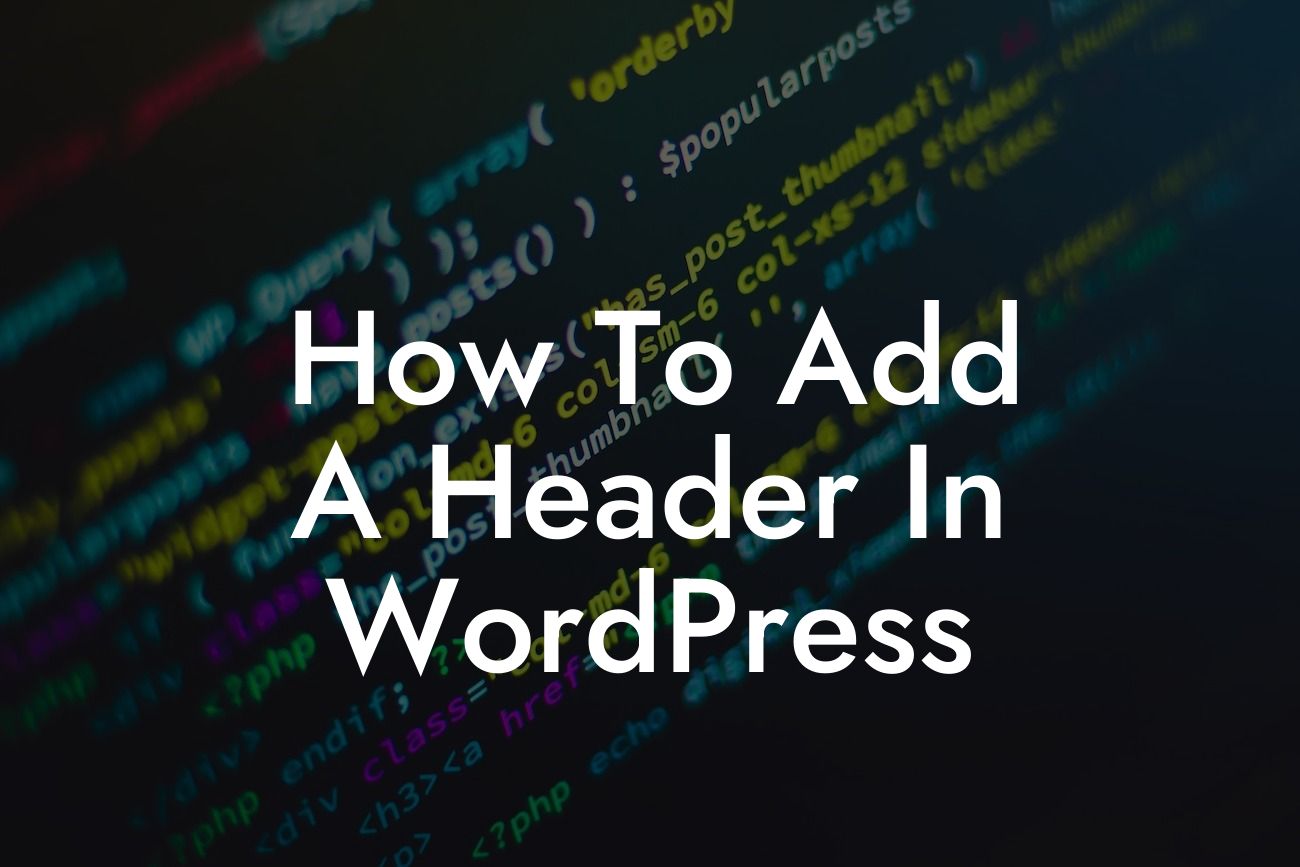In today's digital age, having a visually appealing and professional-looking website is crucial for the success of any small business or entrepreneur. And one of the key elements that can make or break the aesthetics of your website is the header. A well-designed header can instantly grab your visitors' attention, convey your brand message, and enhance user experience. In this comprehensive guide, we will walk you through the process of adding a header in WordPress, giving you the tools to take your online presence to new heights.
Adding a header in WordPress may seem like a daunting task, especially for those who are new to the platform. However, with the right guidance, it can be a simple and rewarding experience. Let's break down the process into easy-to-follow steps:
1. Choose a Theme:
Before you start customizing your header, it's essential to select a theme that offers flexibility and customization options. A theme with a built-in header builder or header customization options will make the process much easier.
2. Customizing the Header:
Looking For a Custom QuickBook Integration?
Once you've chosen a suitable theme, it's time to start customizing your header. Most WordPress themes allow you to customize the header through the theme customizer. Access the theme customizer from your WordPress dashboard, navigate to the header section, and explore the available options.
3. Adding a Logo:
A logo plays a vital role in establishing your brand identity. To add a logo to your header, visit the theme customizer and look for the logo customization options. Upload your logo file, adjust its size and position, and save your changes. Your website will now display your logo prominently in the header.
4. Navigation Menu:
The navigation menu is another integral part of a website header. It helps visitors navigate through your site and find the information they need. In the theme customizer, find the menu customization options and create a menu or select an existing one. Add pages, categories, or custom links to your menu, and customize its appearance and position in the header.
5. Optimizing for SEO:
While designing your header, it's essential to consider SEO optimization. The header plays a significant role in on-page SEO. Use relevant keywords in the alt text of your logo, optimize your navigation menu links, and ensure the header is responsive and loads quickly for mobile users.
How To Add A Header In Wordpress Example:
Imagine you have a small bakery business, and you want to add a header that reflects your brand's warmth and delicious delicacies. You can customize your header with a mouth-watering image of your bestselling pastry and a warm color scheme that showcases your unique baked goods. By adding your bakery's logo and a user-friendly navigation menu that highlights your menu, contact information, and special offers, you create a header that not only attracts visitors but also encourages them to explore your website further.
Congratulations! You now have the knowledge and skills to add a captivating header to your WordPress website. Remember, a well-designed and optimized header can significantly impact your online success. Take a moment to share this article with fellow entrepreneurs who may find it helpful. And don't forget to explore other guides on DamnWoo and try out our awesome WordPress plugins that are specifically crafted to elevate your online presence and supercharge your success. With DamnWoo, your website will stand out from the crowd, leaving a lasting impression on your visitors.













